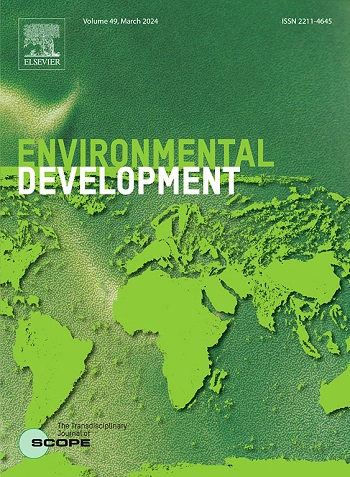对洪水、地震和火灾灾害的社会脆弱性评估案例研究:沙里市各区
IF 5.3
2区 环境科学与生态学
Q2 ENVIRONMENTAL SCIENCES
引用次数: 0
摘要
近几十年来自然灾害的增加表明,社会脆弱性评估是了解自然灾害发生和应对的重要问题。本研究调查了沙里市不同地区面对三种灾害的社会脆弱性:洪水、地震和火灾。为此,本文从暴露度、敏感性和适应性三个维度构建了社会脆弱性的分析框架和评价标准。选取了沙里市的11个区,并根据总体规划、实地调查和访谈收集了信息。结果表明,区域3-1是最脆弱的区域,而区域2-3的脆弱性最小。当灾害发生时,在沙里的四个区中,第4区(市中心)和第1区(城市北部到西部)遭受的损失最小。确定了影响社会脆弱性的因素。结果表明,社会脆弱性受多种因素的影响。暴露度预测因子主要有地形、建筑年龄和靠近河流;在敏感性维度上,消防站和公交车站;在适应性维度上,教育和政府支持。因此,提高建筑环境的质量可以降低暴露的风险,获得城市服务可以降低敏感性,教育水平和政府支持可以提高适应性。管理人员和规划人员可以利用这一工具及其结果,采取适当的战略,改进利用各种自然资源的目标和决策。本文章由计算机程序翻译,如有差异,请以英文原文为准。
Assessment of social vulnerability to flood, earthquake and fire hazards case study: districts of Sari city
The increase in natural hazards in recent decades shows that social vulnerability assessment is an important issue for understanding the occurrence and response to these hazards. This research investigates the social vulnerability of different parts of Sari city to three hazards: flood, earthquake, and fire. To this end, the paper formulates an analytical framework and assessment criteria for social vulnerability based on exposure, sensitivity, and adaptability dimensions. Eleven districts of Sari city were selected, and information was collected based on the master plan, field surveys, and interviews. According to the findings, area 3-1 is the most vulnerable area, while area 2–3 has the least vulnerability. When disasters occur, among the four districts of Sari, District 4 (in the city center) and District 1 (north to west of the city) will suffer the least damage. The factors affecting social vulnerability were identified. The results show that social vulnerability is influenced by different factors. The seven main factors predicting it in the exposure dimension are topography, building age, and proximity to the river; in the sensitivity dimension, fire stations and bus stations; and in the adaptability dimension, education and government support. Therefore, increasing the quality of the built environment reduces the risk of exposure, access to urban services reduces sensitivity, and education level and government support increase adaptability. Managers and planners can use this tool and its results to adopt appropriate strategies and improve objectives and decision-making in the use of various natural resources.
求助全文
通过发布文献求助,成功后即可免费获取论文全文。
去求助
来源期刊

Environmental Development
Social Sciences-Geography, Planning and Development
CiteScore
8.40
自引率
1.90%
发文量
62
审稿时长
74 days
期刊介绍:
Environmental Development provides a future oriented, pro-active, authoritative source of information and learning for researchers, postgraduate students, policymakers, and managers, and bridges the gap between fundamental research and the application in management and policy practices. It stimulates the exchange and coupling of traditional scientific knowledge on the environment, with the experiential knowledge among decision makers and other stakeholders and also connects natural sciences and social and behavioral sciences. Environmental Development includes and promotes scientific work from the non-western world, and also strengthens the collaboration between the developed and developing world. Further it links environmental research to broader issues of economic and social-cultural developments, and is intended to shorten the delays between research and publication, while ensuring thorough peer review. Environmental Development also creates a forum for transnational communication, discussion and global action.
Environmental Development is open to a broad range of disciplines and authors. The journal welcomes, in particular, contributions from a younger generation of researchers, and papers expanding the frontiers of environmental sciences, pointing at new directions and innovative answers.
All submissions to Environmental Development are reviewed using the general criteria of quality, originality, precision, importance of topic and insights, clarity of exposition, which are in keeping with the journal''s aims and scope.
 求助内容:
求助内容: 应助结果提醒方式:
应助结果提醒方式:


